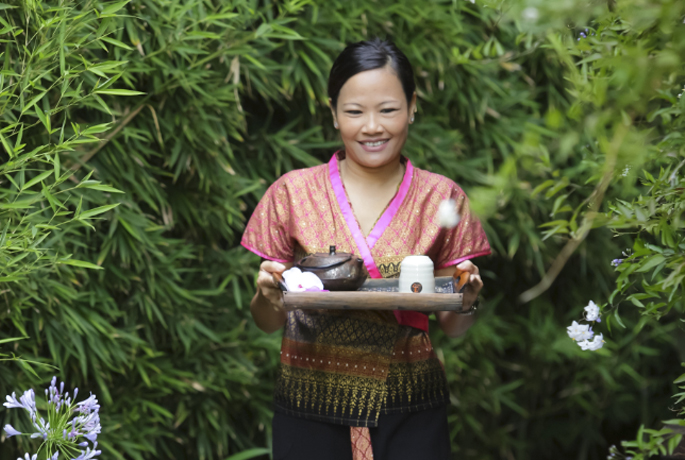THE TEA CEREMONY
Those of you who have already visited us at the Barceló Asia Gardens already know that we welcome you with an exquisite cup of tea brought straight from Thailand; We do not doubt that tea is another one of those common elements in Asian culture that brings about a series of traditions, rituals, typologies and cultural aspects.
Today, we would like to introduce you to something new about Japanese culture, more specifically the Tea Ritual or “Chado”.
This ritual, which includes a choreography to prepare and serve this Green tea called Matcha”, is served along with some traditional Japanese pastries to balance out the bitter taste of tea.
For us in Europe this might not make much sense, but after watching this ritual you will be short for words: it is not about drinking tea in itself, but about the ritual behind preparing it for our guests, always respectfully…with every move…every gesture, even placing each necessary utensil in its place to carry out this ceremony which must be precise, even the angle at which the guest is approached at is relevant,Shokyaku.
As we unveil the history of Japanese tea rituals, we see that it is not of Japanese origin. A Buddhist monk, who returned from the neighbouring country, introduced it in Japan. The story goes that this monk had to opportunity to prepare this delicious tea, just brought from China, for the
Emperor, who after enjoying its taste and medicinal properties, issued an imperial document demanding the tea be grown in the area.
From back then and until nowadays, this tradition of serving tea to guests in such a refined manner in sign of respect and gratitude has been taking shape. We would like you to feel this way at the Asia Gardens,and that is the reason why we offer you this delicious drink which will reach your senses and will give you an idea of the kind of relaxation that awaits you at our luxury resort.
In order to properly celebrate such a visual ritual, first of all our guests shall wash their hands and mouth and remove their shoes. The entrance to the lounge where we celebrate the Chado is often quite low, in a way that our guests must kneel down when entering; the meaning of this is merely to make everyone feel at the same level showing as much humbleness and respect for others as possible.
The host shall heat up some water and thoroughly clean each of the twelve utensils that will be used in the ceremony. These utensils are often true works of art passed on from generation to generation.
Once warm, the water and tea are mixed together with a bamboo blender. Every move of the host will have choreography and the guests will be fully immersed in this performance.
There are two traditional ways of preparing and serving Japanese tea: Koicha and Usucha, making reference to the consistency of the drink: Koichais a much more consistent and dense type of tea prepared using 3 times the amount used when preparing Usucha, which is much lighter and less intense.
Koicha is an intense type of tea served in the same bowl shared by all guests, the lighter tea, Usucha, is served individually.
In Japan, there are even many schools to teach this ritual the correct and traditional way; you may even already learn about this very visual tradition in some schools and associations in Spain. There is no doubt about Japan’s pursuit of perfection. We, in our Asian corner in the Mediterranean, try to follow lead.
At the Asia Gardens we might one day celebrate one of these ceremonies; in the meantime, we shall continue to welcome you with a cup of tea upon arrival to give you a taste of the peace that awaits you during your stay with us.



